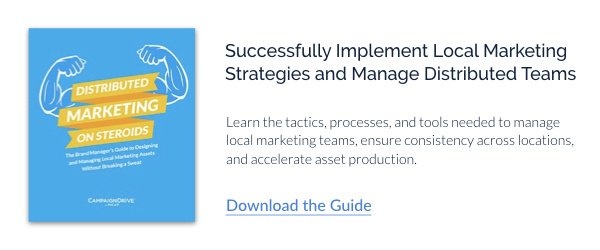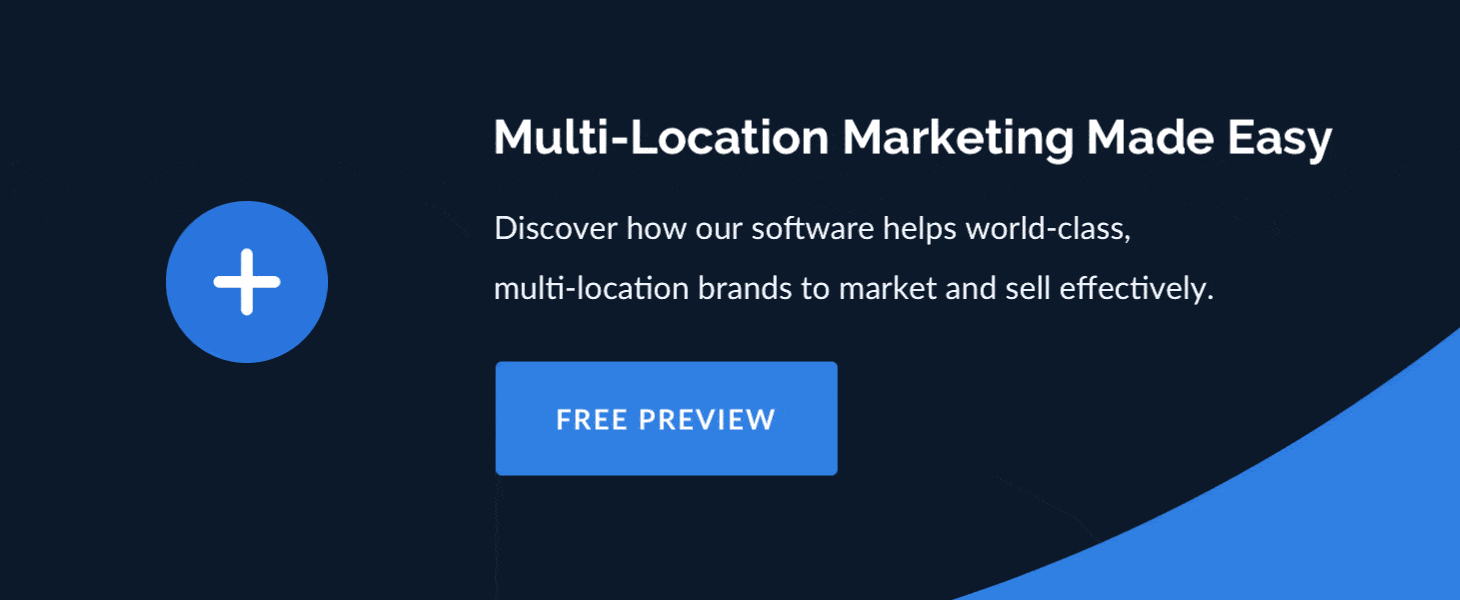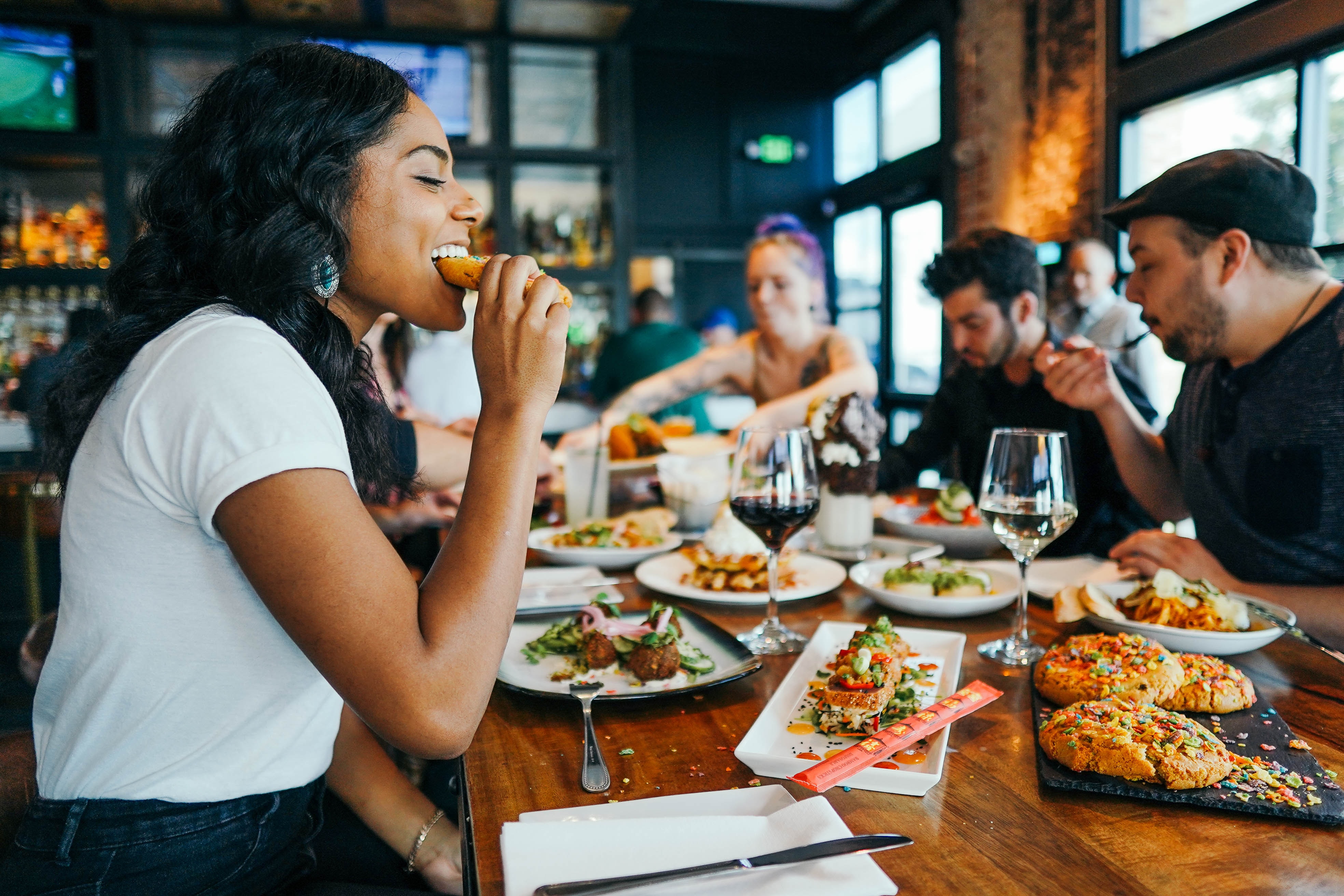When you think about coffee, Starbucks probably comes to mind. Similarly, spend too much time thinking about doughnuts and you'll be search for the closest Krispy Kreme or Dunkin'. Why? These companies have built up enough brand equity to be known and immediately recognized for a specific product it service. However, building brand equity requires much more than great coffee and tasty doughnuts.
Instead, it's all about customers' perceptions of your brand. The fact is, customers have to know your brand. In order to establish a positive customer perception, marketers are starting to focus more and more on creating one-of-a-kind customer experiences that differentiate their brand from the competition. For distributed brands, these experiences need to be delivered consistently across locations.
Unfortunately, sometimes you can't create that awesome and unforgettable experience on your own. In some instances, developing a strong brand partnership at the local level can give your business a real boost in brand equity.
How Strong Brand Partnerships Boost Brand Equity
A brand partnership is a mutual agreement between two or more businesses or organizations. Through these partnerships, companies help one another to increase brand exposure, break into new markets, and add extra value to products/services.
When successful brand partnerships are developed and utilized effectively across the entire distributed network, brands can do the following:
Build Trust: When two or more reputable brands partner with one another, that's showing the consumer that the brand can be trusted. If the consumer trusts the brand that you partner with and has had a good experience with the company, the consumer will likely have a positive experience with your brand too.
Add Value: When your brand develops a well-integrated partnership, it adds intrinsic value to the product or service that each of those companies offers natively. Now that there are two or more stakeholders involved, each bringing something unique to the table, consumers find extra value in the product or service.
Generate Buzz: When reputable brands partner, there's usually some buzz that surrounds the partnership. Consumers are excited about the product or service. It provides public relations opportunities or opens up new media exposure.
Successful Brand Partnerships
It's important to know that not all national brand partnerships are created equal. For a brand partnership to make sense, the companies must both gain something from it. The brands must also formulate a cohesive marketing campaign that makes sense to the consumer.
When it comes to top companies, everyone can think of some kind of partnership that's done very well. For example, Balmain and H&M, or Spotify and Starbucks are partnerships that not only helped reach new markets, they contributed to establishing the brand equity of all companies involved.
For Balmain, the French couture clothing line, working with H&M made sense because it increased their brand recognition with younger customers. For H&M, the partnership added to their high-fashion credibility. Spotify and Starbucks were a perfect match because it capitalized on the young, tech-savvy, coffee-chugging Starbucks consumer who very likely, loves to use streaming music services.
But what about distributed brands which have lots of locations? With so many moving pieces, deploying a partnership campaign can be especially challenging, even for the most recognizable franchise or retailer. We all know the payoff is big, though, so how do they actually get it done?
Here are three examples of national partnerships that were rolled out with great success:
7-Eleven and DoorDash
By 2020, online grocery and convenience goods sales in the United States are expected to be about 18 billion dollars. But not many brands are capitalizing on this clear opportunity today because of extra costs in technology, delivery process and training.
Cue the inspirational music, because in 2015 7-Eleven partnered with DoorDash to experiment with adding new shopping and delivery methods at the local level. DoorDash, a savvy, on-demand restaurant delivery service, has also offered promotions with Coca-Cola and Jack-In-The-Box to help expand their reach.
In their partnership with 7-Eleven, DoorDash delivered items from 7-Eleven stores to customers for a $2.99 delivery fee. The convenience store provided the option for customers to buy online, expanded the product line available at the participating stores to facilitate larger orders and offered new services such as “Convenience Packs,” consisting of commonly purchased household products.
Although the service was only available within five metropolitan markets, including Chicago, Los Angeles, and New York, the impact at the local level was significant. By focusing the partnership's marketing campaigns exclusively in these areas, 7-Eleven increased brand exposure in those markets while also piloting a new operating model for their store owners. To bolster the strategy, the franchisees at participating stores were provided with in-store promotions and marketing collateral to promote this new service.
Dunkin' Donuts and Waze
Just to prove that food and tech make great bedfellows, the partnership between Dunkin’ Donuts and Waze is another great example of how brand partnerships can have local impact. Bringing these brands together gave the 86% of commuters who drive to work each day the option to place their Dunkin' order ahead.
At the brand level, the partnership has been effective for both companies because the program stipulates that customers have to be Dunkin' rewards members and also download the Waze app. Getting new signups and app downloads means more loyal customers who can be engaged more often by the brand.
But it's not all open roads and doughnuts – this kind of partnership requires full buy-in from all of Dunkin' Donuts' franchise owners. They have to monitor and execute incoming online orders on top of their usual morning rush. They also have to promote the service, and use any kind of marketing collateral sent from corporate. When promoted and executed well at the local level, consumers get what they want and sales increase across the network. When executed poorly, the marketing team at Waze will ask why the customer experience for this dough-nutty partnership isn't being delivered by Dunkin' the way they promised, and the franchisees will wonder what their ad funds are really buying.
Ace Hardware and PGA TOUR
The partnership between Ace Hardware and the PGA TOUR golfer, Jim Furyk was a bit different from these high-tech food programs. While both "brands" have a similar target audience, putting the two together for a marketing campaign could be tricky. Jim, while the face of the PGA TOUR, isn't so much of a brand as he is a sports celebrity.
To leverage the most out of the partnership, which Ace Hardware considered a sponsorship, they launched a campaign that included digital, social content and more traditional advertising. Jim's endorsement of Ace Hardware tied his good values, hard work ethic and positive public image with the company. This played off their brand equity, but also helped to bolster their image as a brand that is down-to-earth, hands-on and always helpful.
Ace Hardware, whose store owners regularly compete with hardware juggernauts Home Depot and Lowes, uses these brand characteristics as it's differentiator. To stand out, Ace has cultivated an attitude that is personable and helpful. Like Jim Furyk, Ace Hardware is an All-American, trustworthy and strong brand with good values. At the local level, employees of Ace Hardware have to live up to their tagline, "Ace, the helpful place," to make the most of the sponsorship. Not only do they need to successfully implement the campaigns that go with the TOUR's season, they also need to keep the core identity of the brand alive.
How Do National Brand Partnerships Influence Brand Equity?
Given all of these successful brand partnership examples, how do they actually lead to increased brand equity? Although some brands won't have the reach to immediately partner with a highly recognized brand such as the PGA TOUR or Waze, there are still opportunities to take findings from successful distributed brands partnerships, and build meaningful connections and collaborations of their own.
When distributed brands look to build partnerships, they should focus on selecting companies their customers will be excited about. Focus on the benefits your brand can give to the other, and set terms that make sense for everyone.
To maximize the effectiveness of brand partnerships, many industry-leading brands have invested in brand management solutions like ours. As a recognized brand management software provider, we've worked alongside some of the world's leading brands. It's easy to get started. Here's how:







